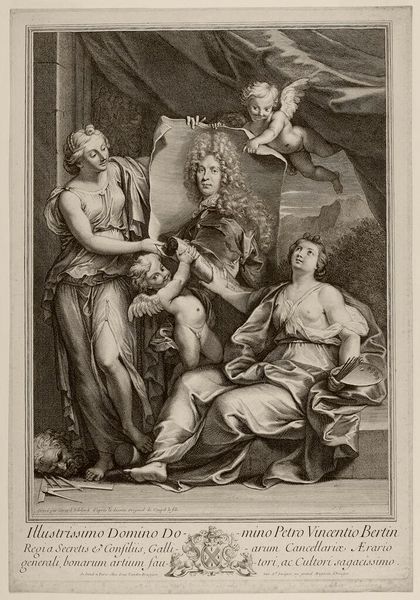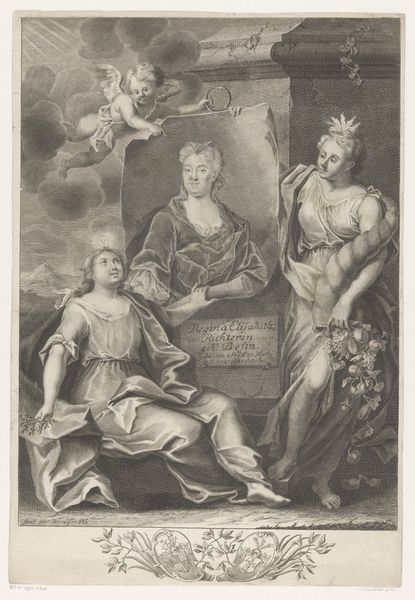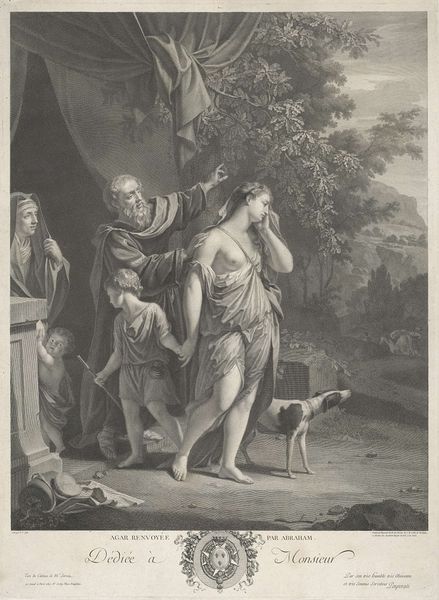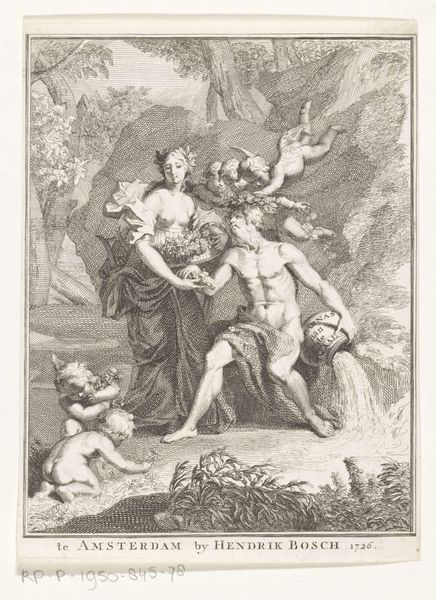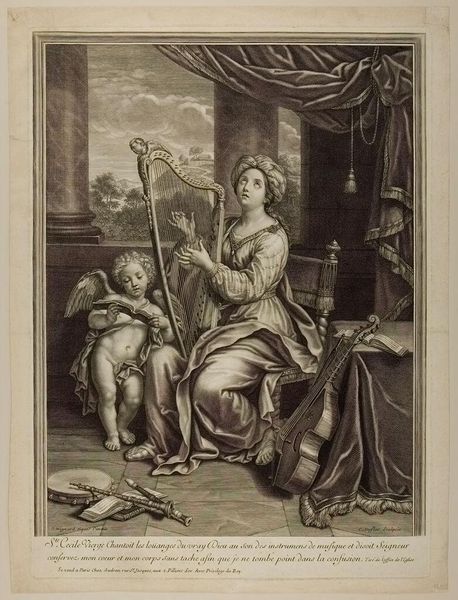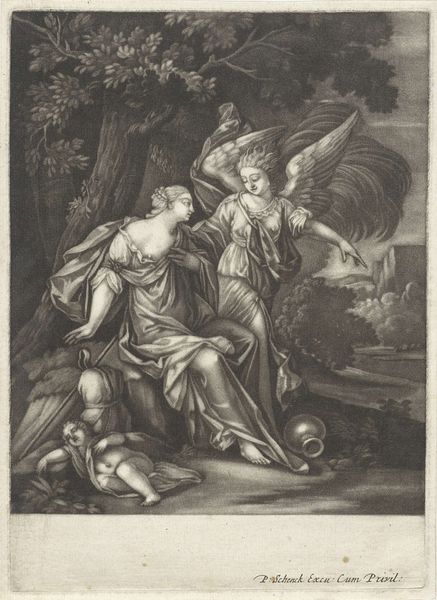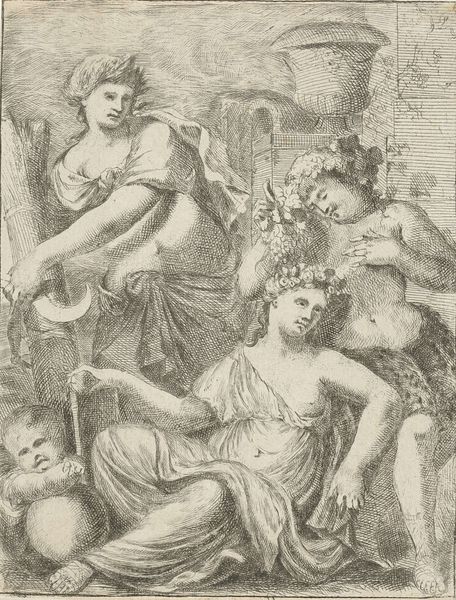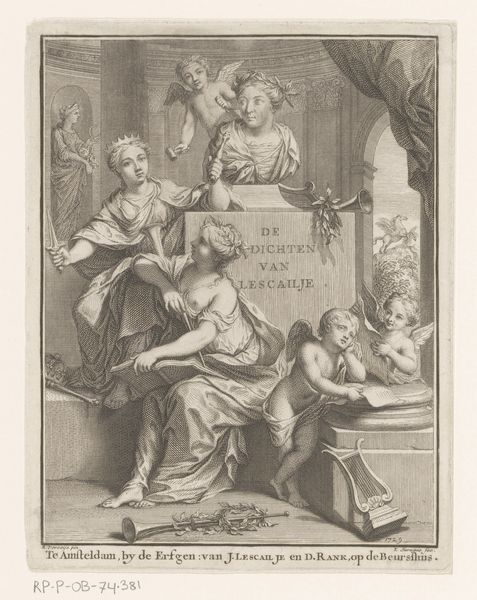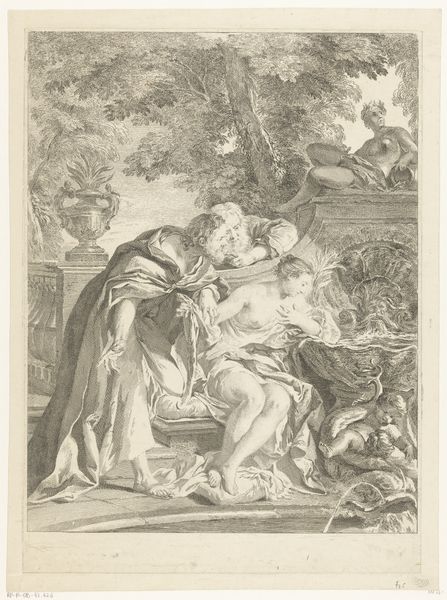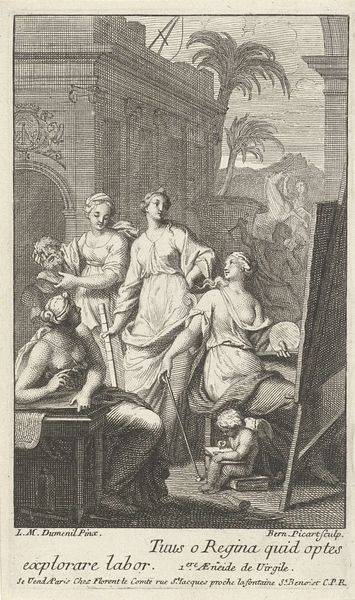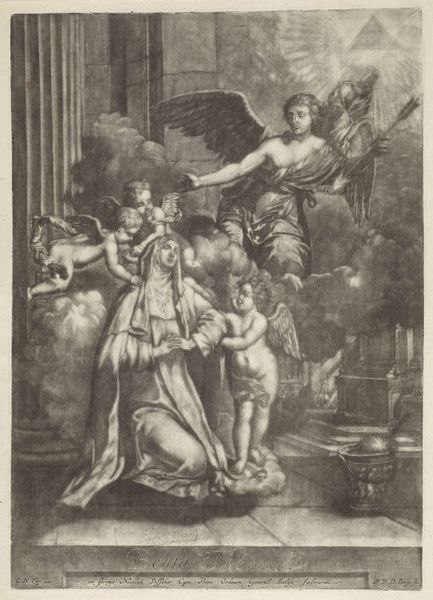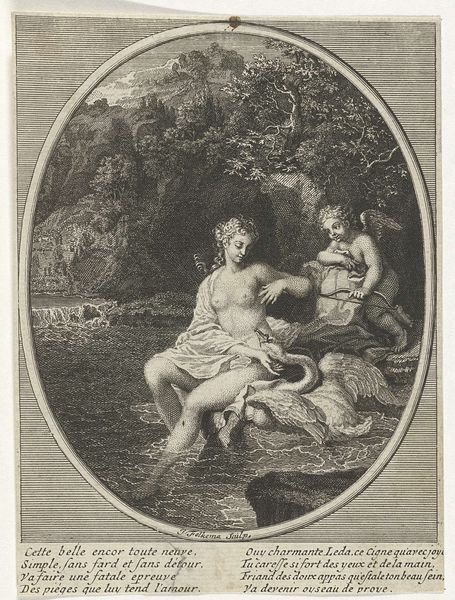
engraving
#
baroque
#
dog
#
figuration
#
genre-painting
#
engraving
Dimensions: height 377 mm, width 291 mm
Copyright: Rijks Museum: Open Domain
Curator: This engraving, known as "Musicerend gezelschap" and rendered between 1658 and 1733, is attributed to Gerard Hoet. It depicts a group of people making music in an outdoor setting. Editor: It's striking how much dynamism Hoet manages to capture within the stark, almost theatrical setting suggested here. There is an unsettling yet compelling narrative. Curator: Exactly! Looking at it from a production perspective, engraving allowed for a certain level of detail. Hoet has used the cross-hatching technique to create depth and texture. You can really see how the light is manipulated to emphasize form in the fabrics, figures, and background elements. Editor: And who has access to participate? The bare breasts of the central and rearmost women, the shoes and instrument of the flutist--what power structures are implied? What freedoms or social constraints define their actions within the broader historical narrative of art and social status? I want to unravel who is allowed pleasure, and in what format. Curator: Those social signifiers and roles were constructed through the materials and the production methods available. What Hoet chose to represent and how—the costumes, the instruments— speaks to the social and cultural milieu of his patrons and the intended audience. The inclusion of figures that might seem less 'elevated' next to mythological images certainly brings up those questions of consumption and social position. Editor: Right! The choice of an engraving is so important. The reproducibility allowed for wider distribution of these images—were these musicians meant to embody moral, societal messages for private or even public viewing? How did that access affect perception of gender, sexuality, class through distribution? Curator: Ultimately, what lingers with me are the material and labor—the craftsmanship itself. Looking so closely at each carefully carved line makes one so appreciative of not only the skill and creative choices that produced them but the world these engravings give a window to. Editor: Indeed. Examining these imprints through a contemporary lens unearths conversations not only about art history, but enduring sociopolitical issues about labor, accessibility, gendered access to production. The image truly starts to pulse with something relevant today.
Comments
No comments
Be the first to comment and join the conversation on the ultimate creative platform.
